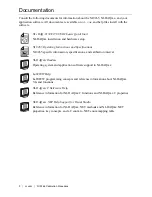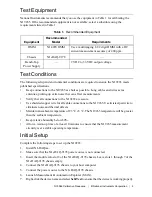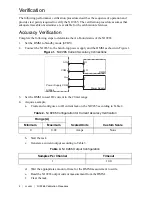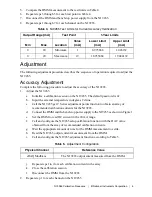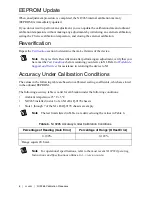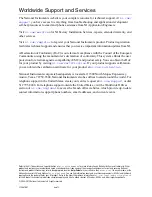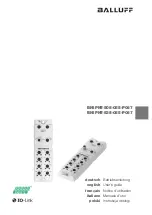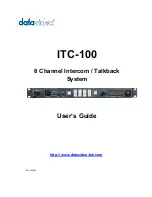
NI 9265 Calibration Procedure
|
© National Instruments Corporation
|
3
Test Equipment
National Instruments recommends that you use the equipment in Table 1 for calibrating the
NI 9265. If the recommended equipment is not available, select a substitute using the
requirements listed in Table 1.
Test Conditions
The following setup and environmental conditions are required to ensure the NI 9265
meets
published specifications.
•
Keep connections to the NI 9265 as short as possible. Long cables and wires act as
antennae, picking up extra noise that can affect measurements.
•
Verify that all connections to the NI 9265 are secure.
•
Use shielded copper wire for all cable connections to the NI 9265. Use twisted-pair wire to
eliminate noise and thermal offsets.
•
Maintain an ambient temperature of 23 °C ±5 °C. The NI 9265 temperature will be greater
than the ambient temperature.
•
Keep relative humidity below 80%.
•
Allow a warm-up time of at least 10 minutes to ensure that the NI 9265 measurement
circuitry is at a stable operating temperature.
Initial Setup
Complete the following steps to set up the NI 9265.
1.
Install NI-DAQmx.
2.
Make sure that the NI cDAQ-9178 power source is not connected.
3.
Insert the module into slot 8 of the NI cDAQ-9178 chassis. Leave slots 1 through 7 of the
NI cDAQ-9178 chassis empty.
4.
Connect the NI cDAQ-9178 chassis to your host computer.
5.
Connect the power source to the NI cDAQ-9178 chassis.
6.
Launch Measurement & Automation Explorer (MAX).
7.
Right-click the device name and select
Self-Test
to ensure that the device is working properly.
Table 1.
Recommended Equipment
Equipment
Recommended
Model
Requirements
DMM
NI 4070 DMM
Use a multiranging 6 1/2 digit DMM with a DC
current measurement accuracy of 400 ppm.
Chassis
NI cDAQ-9178
—
Bench-Top
Power Supply
—
9 VDC to 36 VDC output voltage.


